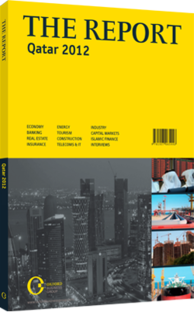Going with the flow: The government is taking various measures to shore up water security
With Qatar positioned to meet all its power requirements over the next three years, attention has now turned to the water sector. Although the country has developed significant capacity here, demand continues to grow and policymakers in Doha are becoming acutely aware of the importance of water for long-term sustainable development. Maplecroft’s 2011 Water Stress Index, which measures the ratio of consumption against renewable supplies, states Qatar is the second-most water-stressed country in the world. According to environmental assessment and information provider Earth Trends, Qatar’s internal renewable water resources per capita stood at 86 cu metres in 2001, compared to an average of 1223 cu metres per capita for the MENA region.
ADDRESSING NEEDS: This situation has not improved over the past decade. With the country’s population more than doubling to 1.69m people between 2004 and 2010, and industrial and economic development continuing at a steady pace, the pressures on the water supply have been considerable. As such, the number of water customers has been growing steadily, increasing by 13.6% in 2010, while per-capita consumption has also been moving upwards, rising by 11.3% to 158 cu metres per person in 2010, according to the Qatar General Electricity and Water Corporation (Kahramaa). Indeed, demand rose by 264% between 1997 and 2010. The country has, therefore, become highly dependent on desalination as a means of providing water for domestic and industrial use. According to MEED, 99.9% of Qatar’s potable water is generated from desalinated seawater. The country now has seven desalination plants operated on a build-operate-transfer basis as part of the independent water and power project (IWPP) programme started in 2001. The latest IWPP, Ras Laffan C, opened in May 2011 and brought an additional desalination capacity of 63m gallons per day, pushing the country’s total capacity to 325m gallons per day. Qatar can currently cover its requirements, but in the medium term, further investment will be needed. Firstly, the government, through the Qatar National Food Security Programme (QNFSP), has made water a priority as a key component of food security and sustainability. It has made a number of overseas agricultural land purchases, including 40,000 ha in Kenya, to ease the burden on water for agricultural use at home, but further policies will have to be implemented. To relieve the stress on its limited groundwater reserves, the QNFSP has said that it plans to secure agricultural production from desalinated water. This will require further roll-out of desalination projects. In the shorter term, this is likely to be through the expansion of existing IWPP facilities. Developers are expected to bid to expand the capacity of each facility by 90m gallons per day.
RENEWABLES: Given the unsustainable drain of desalination on energy use, the government is likely to turn to solar technologies for new desalination plants as a long-term solution. While this may be some way from being brought to the market, solar companies are already beginning to talk of the positive impact this could have on the nascent industry in Qatar. According to Omran Hamad Al Kuwari, the CEO of Green Gulf, “A lot of future growth will be driven by what the QNSFP says in terms of solar for desalination.” Qatar Foundation, through its subsidiary Qatar Environment and Energy Research Institute, is in the early stages of conducting research on solar desalination technologies, as well as the application of solar technologies at different sites.
This should help bolster sustainable water supply in the longer term. In the shorter term, Kahramaa is also working to support Qatar’s strategic water reserves. These slipped from 3.7 days in 2000 to 2.5 days in 2009. While they were increased to 2.8 days, or 597m gallons per day, in 2010, they are still dangerously low.
As such, the authority is working to boost underground aquifer storage and construct five new reservoirs, pushing reserves up to 33.5bn gallons per day by 2036. This should help the country to manage its water resources and provide a platform from which to grow supply in a sustainable manner over the coming decades.
You have reached the limit of premium articles you can view for free.
Choose from the options below to purchase print or digital editions of our Reports. You can also purchase a website subscription giving you unlimited access to all of our Reports online for 12 months.
If you have already purchased this Report or have a website subscription, please login to continue.

